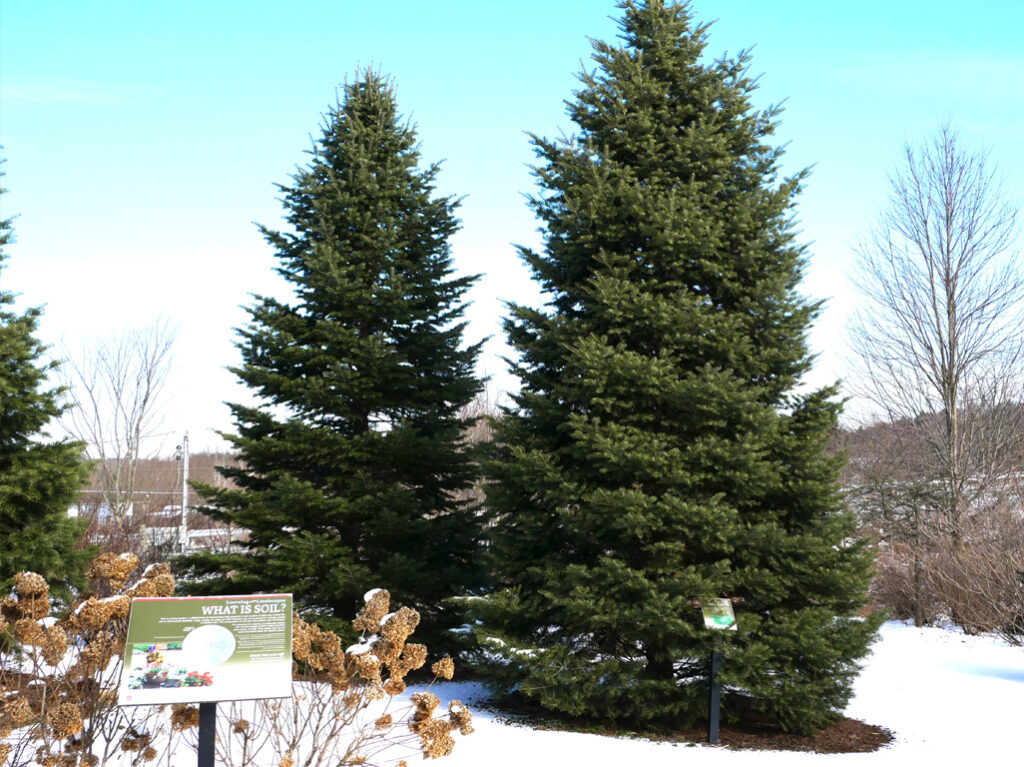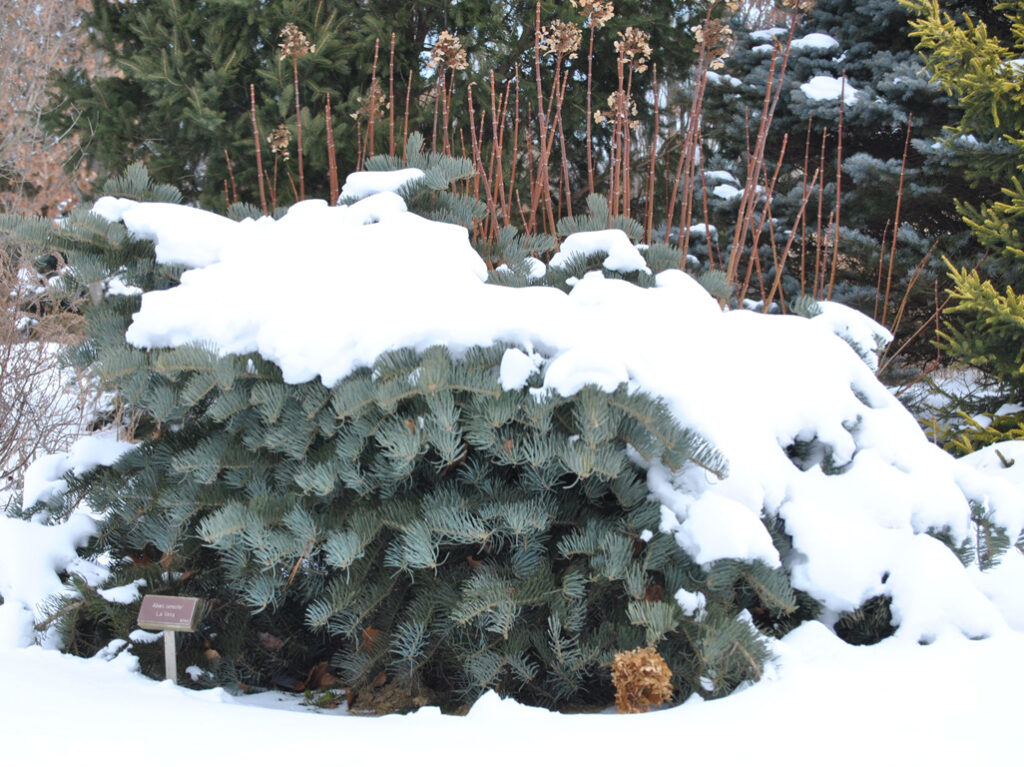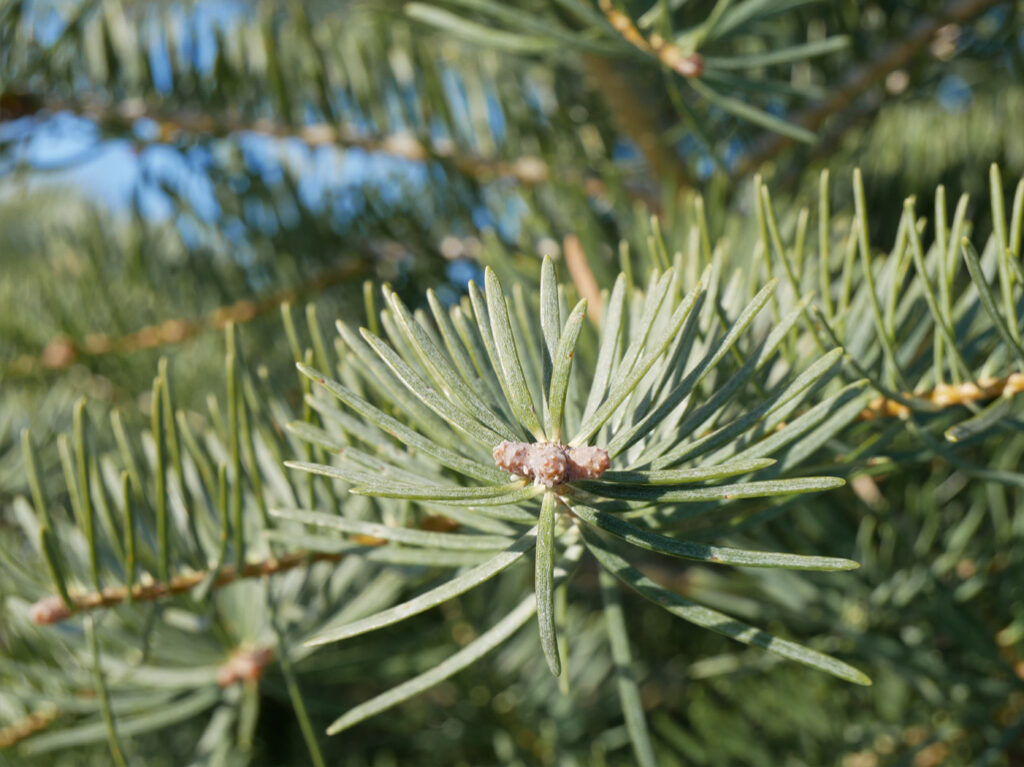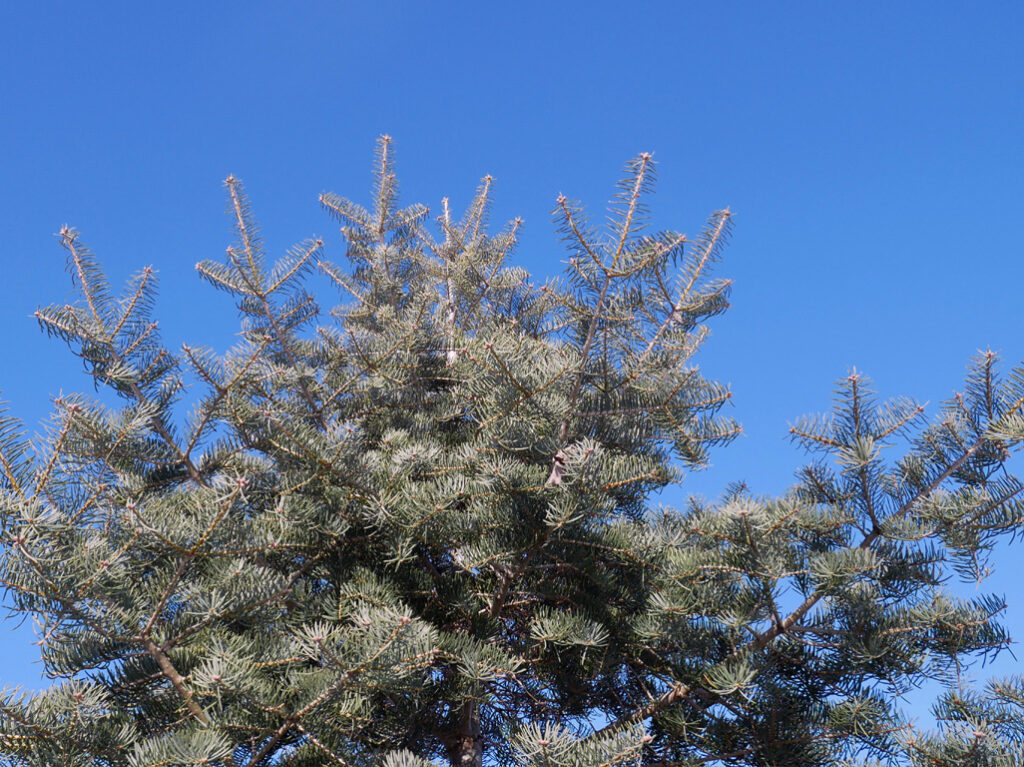
Abies concolor
Common Name
White Fir or Concolor Fir
Family
Pinaceae (Pine)
Tree or plant type / form
Narrow-upright to pyramidal evergreen tree
Landscape Use
Large specimen fir for the landscape; can be used a single specimen or an effective privacy screen or windbreak on larger properties.
Season of interest and/or other ornamental feature(s)
Provides handsome evergreen foliage throughout the year; some seedling-grown or clonal sections exhibit bluish needles that rival those of the familiar Colorado Blue Spruce. White Fir is also a popular Christmas tree.
Size at Landscape Maturity
Medium to large tree reaching 30 to 40 feet tall and 15 to 25 feet wide at 20 to 30 years of age; does not attain the size of naturally occurring trees in western North America.
Light exposure
Full sun to part shade
USDA Hardiness zones
4 – 7
Origin / Native locale
Western United States to northern Mexico
Wildlife Value (incl. pollinators)
Birds find cover and nesting sites in the branches.
Soil Type & Drainage
Does well in a variety of soil types provided they are moderately to well drained.
Tolerances
Withstands heat, humidity, and drought better than most firs; exhibits some tolerance to heavier soils.
Leaf Description
Conspicuously curved, ascending needles are 1.5 to 2.5 inches long; generally blue-green but color can range from bright blue to green depending on genetics. The relatively soft needles exhibit a strong citrus odor when bruised.
Bloom Time in Northeast Ohio
Late spring (pollen cones)
Flower Description
Male (pollen) cones are produced near the top of mature trees but are not ornamental.
Cone / Fruit
Cones are cylindrical, 3-6 inches long, green or brown with a purple bloom (wax) when young, brown and glossy at maturity. The cones are held upright and break apart to release the winged seeds. Trees may not produce cones and seeds until they are up to 40 years of age.
Available at
Secrest Arboretum Plant Discovery Days and selected local nurseries
Additional information
White Fir is an excellent substitute for disease-prone Colorado Blue Spruce (Picea pungens) and White Spruce (Picea glauca). It is also better adapted to Midwestern landscapes than Balsam fir or Canaan Fir (Abies balsamea), and Fraser Fir (Abies fraseri).
Use the Secrest Aboretum Explorer to find locations where this plant is located on the Wooster campus.



